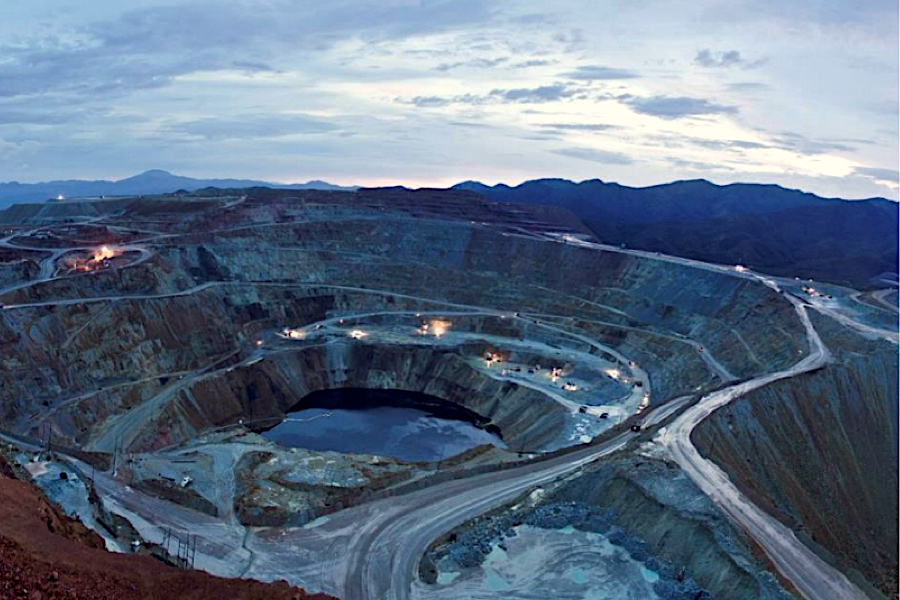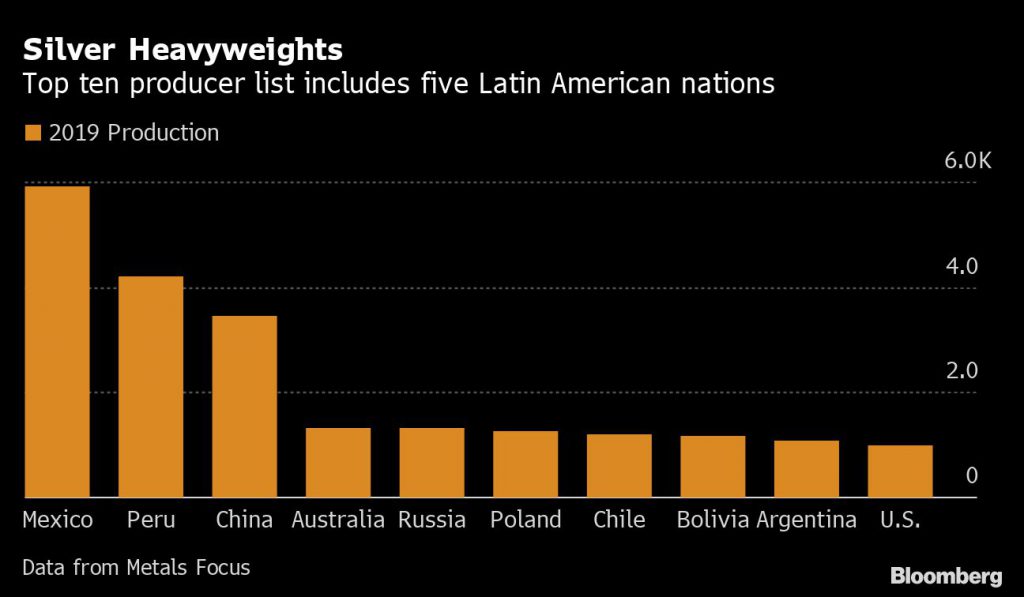
Silver’s biggest monthly rally since 1979 has mainly been a story of strong demand. Investors are seeking shelter from pandemic turmoil and negative rates while industrial demand for the metal recovers in some parts of the world.
But here’s another reason to be bullish on silver: Supplies are set to shrink too.
Peruvian and Mexican mines that make up almost 40% of world supply shut en masse earlier this year as the pandemic hit. While much of the industry is ramping back up, some mines have had to close again as Covid-19 cases surge. The Silver Institute now predicts a market deficit, albeit small, for the first time in five years.
The prospect of longer-lasting mine disruptions adds support to a metal that has surged more than 30% in the past month to be the best-performing major commodity. Like gold, silver is viewed as a haven but it also has wide industrial uses in products such as solar panels.

The Silver Institute now predicts a 13% decline in mined production from Latin America this year, with global supply set to shrink 7.2%, said Executive Director Michael DiRienzo. That’s based on 67 million fewer ounces coming out of the region, which would be enough silver to make about 100 million solar panels.
Among a second wave of shutdowns are “some of the biggest silver producing mines in the world and it’s drastically reduced the expected silver output for this year,” said Paul Wiggers de Vries, senior analyst at CRU Group, who expects prices of the metal to keep rising.
CRU now sees silver mine supply falling about 4% this year compared with its pre-pandemic prediction of 4.5% growth, with Peruvian operations and projects most at risk.
Among a second wave of shutdowns are some of the biggest silver producing mines in the world
Peruvian silver output should return to normal in the coming months, with the recovery slower than copper because much of it is done underground where social distancing is more challenging, according to Victor Gobitz, who heads both the Institute of Mining Engineers of Peru and Cia. de Minas Buenaventura SAA.
Exploration and project development may take longer to recover, putting future output at risk, Wiggers de Vries said.
While the highest silver prices in seven years give producers plenty of incentive to ramp back up, much of the metal is produced as a byproduct in copper, gold, zinc and lead mines. In the case of the latter two, prices have remained low.
“There are huge producers that aren’t really silver mines,” Wiggers de Vries said. “So, that kind of becomes one of the risks for silver supply going forward.”
The pandemic is likely to continue disrupting supply, according to Colin Hamilton, managing director for commodities research at BMO Capital Markets.
“We still have a high number of cases and that could lead to local lockdowns again,” Hamilton said.
(By Carolina Gonzalez, with assistance from Justina Vasquez and Joe Richter)
Comments